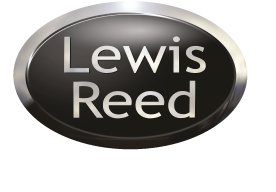The aim of inclusive or universal design is to make changes to items, objects, or places so they are inclusive, accessible, and usable for the maximum number of people possible from the start. If the original was designed to be suitable for the average user, then it was unlikely to consider the needs of every user. When created using the principles of universal design, to the greatest extent possible, products are usable by everyone without the need for adaptation or specialised design.
The established principles for universal design encompass seven guidelines: equitable use, flexible, simple and intuitive, perceptible information, tolerance for error, low physical effort, and size and space for approach and use.
A recent example of universal design influence is the credit card. Although Mesopotamian and Harappan civilizations used clay tablets to track their trades around 5,000 years ago, and shoppers plates – metal plates with customers’ details – began to be offered to regulars from around 1900, what we recognise as a credit card today came into being around 1950.
For a long time, they were produced with the numbers and users’ details raised on one side but since 2020, an increasing number of providers have been changing to numberless credit cards developed to help stop fraud. However, this means that the traditional design of embossed name, number and date is replaced with a flat surface – which means that the sensory signpost for which way to insert the card is no longer there.
So, providers have started to supply cards with differently shaped side notches or embossed dots enabling all users to identify and position their various cards by touch, just as they could with the embossed numbers – a deliberate example of inclusive design.
Adaptive clothing is designed to be functional, adjustable, and comfortable for people with a wide variety of needs. Increasingly, brands are incorporating stylish adaptive clothing with assistive tech into their ranges, both online and on the high street, although awareness of what is available can still be limited.
Shoes are another product that have traditionally been produced in identically sized pairs with the expectation that any slight differences in foot size can be accommodated by this. However, more manufacturers are now creating on-trend easy on/off shoes which can be worn without the need for any adjustment or with easy adjustment and are designed to be put on and taken off either with one hand or hands-free, without compromising on style, by everyone. Some brands also make shoes with pairs comprising of two different sizes, or single shoes.
For people with food allergies or specific dietary requirements who may have visual impairments, making sure that they can buy safe food requires access to essential information. Some manufacturers are now creating packaging designed with Braille on boxes, colourful barcodes, and high-contrast QR codes for screen readers as ways to make their goods more accessible.
In 2021, Olay designed an easy to open jar as an open-source design, allowing other brands to use it and adapt it to their own products. The lids have broad plastic wings, and the company is inviting feedback from users to improve the design of the next iteration.
Similarly, Unilever, in conjunction with adaptive design studio Sour and inclusive creative agency Wunderman Thomson, has developed packaging for Degree Inclusive deodorant which incorporates a larger roll-on applicator with an easy-grip shape, a hooked lid to allow one-handed use, and an easier-to-access magnetic cap closure.
From a more digital perspective, web design should encompass accessibility guidelines which provide, where possible, automatic content start controls, sufficient foreground/background contrast, image and media design alternatives, more than colour to convey information, designs for variable-sized viewports, easily identifiable interactive elements and feedback, appropriate heading and spacing for content, consistent and clear navigation, and clear labels for forms. Likewise, messenger apps should also try to follow these guidelines.
Most smartphones also include a range of accessibility features – for example, apps that turn sounds into live captioning, voice activation for making calls, texts or emails, or screen readers for listening to calls, texts or emails, changing the font size or background and text colours to name a few.
Decathlon, the sports equipment retailer, has enhanced its use of the single International Symbol of Access created in 1968 by adding a specific image representing sports such as basketball, rugby, or tennis. Named Ability Signs, they feature the original symbol plus a sport to represent various sporting experiences rather than simply using the single icon to represent them all.
The contrast between accessibility and inclusive design is that accessibility focuses on accommodating people’s differing abilities whereas inclusive design focuses on solutions that consider all people.
The universal design approach considers diversity in ability, age, neurodiversity, gender identity, race, culture and socio-economic status – and the impact this has on decisions made throughout the design process – from the start.
